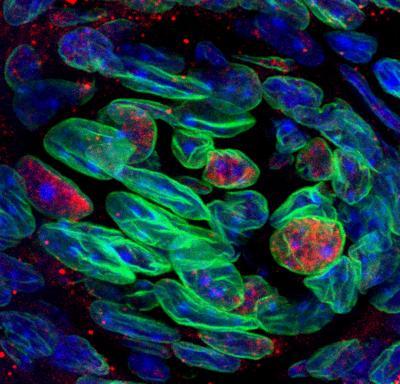PHILADELPHIA (March 7, 2011) – A new research study dramatically increases knowledge of how taste cells detect sugars, a key step in developing strategies to limit overconsumption. Scientists from the Monell Center and collaborators have discovered that taste cells have several additional sugar detectors other than the previously known sweet receptor.
"Detecting the sweetness of nutritive sugars is one of the most important tasks of our taste cells," said senior author Robert F. Margolskee, M.D., Ph.D., a molecular neurobiologist at Monell. "Many of us eat too much sugar and to help limit overconsumption, we need to better understand how a sweet taste cell 'knows' something is sweet."
Scientists have known for some time that the T1r2+T1r3 receptor is the primary mechanism that allows taste cells to detect many sweet compounds, including sugars such as glucose and sucrose and also artificial sweeteners, including saccharin and aspartame.
However, some aspects of sweet taste could not be explained by the T1r2+T1r3 receptor. For example, although the receptor contains two subunits that must join together for it to work properly, Margolskee's team had previously found that mice engineered to be missing the T1r3 subunit were still able to taste glucose and other sugars normally.
Knowing that sugar sensors in the intestine are important to how dietary sugars are detected and absorbed, and that metabolic sensors in the pancreas are key to regulating blood levels of glucose, the Monell scientists used advanced molecular and cellular techniques to see if these same sensors are also found in taste cells.

Some of the green cell nuclei in this taste bud contain the KATP sugar sensor, indicated in red. One of several sugar sensors recently shown by Monell scientists to be present in sweet-sensing taste cells, KATP may help regulate sensitivity to sweet taste under different nutritional conditions.
(Photo Credit: Karen Yee, Monell Center)
The results, published in the Proceedings of the National Academy of Sciences USA, indicate that several sugar sensors from intestine and pancreas also are present in exactly those same sweet-sensing taste cells that have the T1r2+T1r3 sweet receptor.
"The taste system continues to amaze me at how smart it is and how it serves to integrate taste sensation with digestive processes," said Margolskee.
The different sugar taste sensors may have varied roles. An intestinal glucose sensor also found to be located in the sweet-sensitive taste cells may provide an explanation for another mystery of sweet taste: why just a pinch of table salt tastes sweet or salt added to baked goods enhances sweet taste. Known as SGLT1, this sensor is a transporter that moves glucose into the sweet taste cell when sodium is present, thus triggering the cell to register sweetness.
In pancreas, the sugar sensor known as the KATP channel, monitors glucose levels and triggers insulin release when they rise. The authors speculate that KATP may function in sweet taste cells to modulate taste cell sensitivity to sugars according to metabolic needs. For example, this sensor may respond to hormonal signals from the gut or pancreas to make taste cells less responsive to sweets after we have just eaten a sugary piece of pecan pie and do not need additional energy.
"Sweet taste cells have turned out to be quite complex. The presence of the KATP channel suggests that taste cells may play a role in regulating our sensitivity to sweet taste under different nutritional conditions," said first author Karen K. Yee, Ph.D., a cellular physiologist at Monell. "This knowledge may someday help us understand how to limit overconsumption of sweet foods."
Future studies will focus on understanding the complex connections between taste cells and the digestive and endocrine systems.
Source: Monell Chemical Senses Center